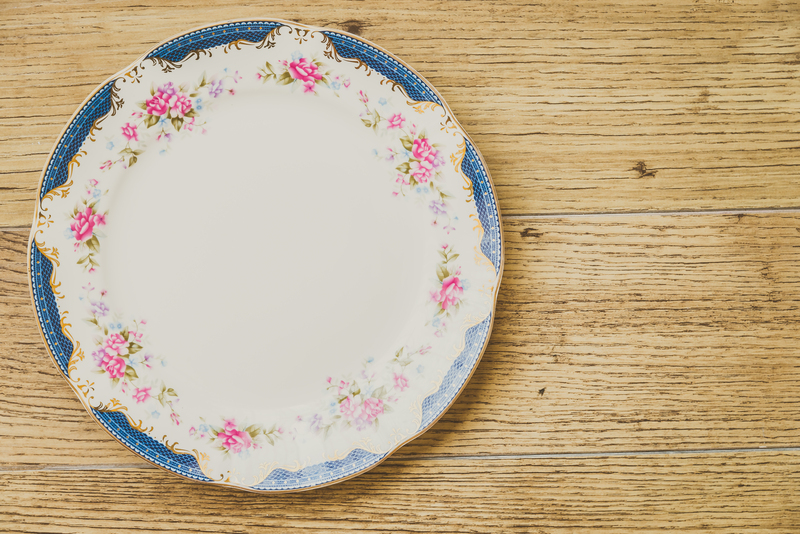Sustainable Solutions for Pots and Pans Disposal and Recycling
Every kitchen accumulates a collection of pots and pans over time. They may become worn out, lose their non-stick coating, or simply be replaced as cooking preferences change. However, the question that often arises is how to dispose of old pots and pans in an eco-friendly way. Proper pots and pans recycling mitigates environmental impact, supports material reuse, and fosters a more sustainable lifestyle. In this comprehensive guide, we'll explore sustainable disposal strategies for cookware and offer practical advice for responsible recycling and reuse.

Why Sustainable Pots and Pans Disposal is Important
The majority of cookware--whether it's aluminum, stainless steel, cast iron, copper, or non-stick--poses unique disposal challenges. Traditional disposal methods, like sending them to landfill, contribute to environmental degradation. It's not just the metals that linger; coatings like Teflon can release toxins if incinerated. Responsibly discarding old cooking utensils is crucial for several reasons:
- Reduces landfill waste and conserves valuable space.
- Prevents pollution by mitigating chemical leaching and toxic emissions.
- Recovers raw materials (such as metals) for use in new products.
- Encourages circular economy practices that keep resources circulating.
Environmental Impact of Improper Cookware Disposal
When disposed of in the trash, cookware often ends up in landfill. Metals can take hundreds of years to break down. Non-stick and Teflon-coated pans contain chemicals that don't naturally degrade, potentially leaching toxins into soil and groundwater. Proper recycling of pots and pans diverts these materials from landfills and lessens the load on the planet.
Identifying Cookware Recycling Options
Before tossing that battered skillet into the bin, consider the spectrum of sustainable solutions available:
1. Repurposing and Reusing Old Pots and Pans
Recycling cookware doesn't always have to mean melting it down for raw materials. Creative reuse can breathe new life into retired pots and pans:
- Garden Planters: Drill holes in the bottom to use them as rustic outdoor flower pots or herb gardens.
- Art Projects: Turn pans into quirky wall art, clocks, or organizers.
- Storage Solutions: Use deep pots for tool storage in garages or sheds.
- Pet Bowls: Stainless steel bowls can become water or food dishes for pets.
2. Donating Pots and Pans
If the cookware is still serviceable, consider donating instead of discarding. Many local charities, shelters, or thrift stores welcome gently-used items. Some options include:
- Goodwill and Salvation Army
- Habitat for Humanity ReStores
- Homeless and domestic violence shelters
- Community kitchens, soup kitchens, or refugee support networks
Make sure items are clean, in decent condition, and that the recipient organization accepts cookware donations.
3. Selling or Swapping Cookware
Upgrading your cook set? List usable pans on local selling platforms such as Craigslist, Facebook Marketplace, or neighborhood apps. Alternatively, participate in community swap events or "freecycling" groups to pass on old cookware and reduce overall waste.
Metal Recycling for Pots and Pans
Most cookware is made of metal, and metals are highly recyclable. Here's how to approach recycling pots and pans based on material type:
Aluminum and Stainless Steel Pans
Aluminum and stainless steel are among the most commonly used materials in cookware and are highly sought after by recyclers. However, your curbside recycling bin probably won't accept bulky items like cookware. Instead:
- Take cookware to a local scrap metal recycler. These facilities break down cookware and separate metals for repurposing.
- Call your local recycling center to ask about drop-off locations or specific programs for pots and pans recycling.
- Some larger municipal recycling facilities host special collection days for metal household items.
Cast Iron Recycling
Cast iron pans are almost indestructible and can last generations if cared for, but if you must dispose of one:
- Sell or donate; vintage cast iron is highly collectible and repairable.
- Scrap metal yards gladly accept cast iron due to its high value.
Recycling Non-Stick, Copper & Coated Cookware
Non-stick pans require extra care. The Teflon or PTFE coating complicates recycling, as most curbside programs cannot process them:
- Specialty recyclers may accept non-stick cookware. Check Earth911.com or local hazardous waste facilities.
- Remove handles or non-metal components before recycling as scrap metal (if permitted by your recycler).
- For copper pans, scrap yards are usually receptive but may require you to separate the copper from other attached materials.
Preparing Pots and Pans for Recycling
To ensure successful recycling:
- Clean all cookware thoroughly to remove food residue or oils.
- Disassemble any removable non-metal parts (plastic handles, knobs, glass lids) as recyclers favor pure metal items.
- Group similar metals together for easier processing.
Sustainable Brands and Programs Supporting Cookware Recycling
A number of cookware manufacturers and brands have stepped up to offer eco-friendly recycling options:
Mail-Back and Take-Back Programs
- TerraCycle: In partnership with some cookware companies, TerraCycle offers mail-in recycling for hard-to-recycle household goods, including some pans.
- GreenPan: The brand encourages responsible disposal and recycling by providing disposal instructions and sometimes accepts returns for end-of-life recycling.
- Local retailers: Some kitchenware stores host annual recycling drives or offer in-store drop-off bins.
Always check with manufacturers for details on how to participate in these eco-friendly initiatives for pots and pans recycling.
Innovative and Zero Waste Solutions
For those adopting a zero waste lifestyle, the focus goes beyond disposal. Instead, it's about prolonging the usefulness of products. Here are some innovative strategies for sustainable pots and pans management:
Cookware Restoration and Repair
- Re-seasoning cast iron can renew its non-stick surface and prevent rust, effectively extending its life by years or decades.
- Some specialty services will recoat, re-tin, or repair damaged pans (especially copper or professional chef-quality items).
Buying Quality and Durability
- Invest in high-quality cookware brands with repairable, replaceable components.
- Prioritize modular sets, so if one item fails, you don't need to replace the entire collection.
- Look for brands offering lifetime warranties or trade-in programs, further reducing long-term waste.
Rethinking Materials: Eco-Friendly Alternatives
- Choose cookware made from recycled metals or renewable resources (such as bamboo utensils or lids).
- Support manufacturers who adhere to responsible practices and minimize use of toxic coatings or plastics.
Local Government and Community Recycling Initiatives
Municipal recycling policies vary widely by location. Being aware of local options helps ensure your old cookware is recycled responsibly:
- Consult your city's sanitation website for information on household metal recycling days or e-waste events (some accept cookware).
- Contact regional scrap yards for information about what types of pots and pans they accept.
- Join social media recycling groups in your community to identify additional resources for sharing, swapping, or upcycling unwanted cookware.
How to Find Recycling Centers Near You
Use online resources to locate responsible disposal centers:
- Earth911: Input your zip code and item type to find local drop-off points for pots and pans.
- RecyclingCenterNearMe.org: Highlights drop-off and bulk recycling options.
- City Government Sites: Most major cities offer comprehensive waste and recycling guides.
Pots and Pans Recycling: Common Myths Debunked
Misinformation can hinder sustainable cookware disposal. Let's clear up some common myths:
- Myth: All cookware is accepted in curbside recycling.
Reality: Most curbside bins don't accept bulky metal or coated pans. Scrap yards or special drop-off days are safer bets. - Myth: Teflon/non-stick pans are unrecyclable.
Reality: Some specialty facilities accept them; always call ahead to check. - Myth: Small quantities aren't worth recycling.
Reality: Every pan counts. Metals are valuable resources and even one pan diverts waste from landfill. - Myth: Damaged or old pans have no value.
Reality: Scrap metal dealers value even broken pots due to their recyclable content.

Frequently Asked Questions (FAQs) on Pots and Pans Disposal
Can I put old pots and pans in my recycling bin?
Typically, no. Many residential recycling programs do not accept bulky metal items. Check with your provider, or bring them to a local scrap metal facility or community recycling event.
How do I recycle non-stick pans?
Non-stick pans can pose a challenge due to coatings. Remove plastic parts and check with specialty recyclers or your city's hazardous waste program for safe disposal.
Are there any brands that recycle used cookware?
Yes! Some brands and retailers offer trade-in or recycling initiatives--always consult with the manufacturer about available programs.
Can old cookware be upcycled?
Absolutely. Pots and pans are useful for planters, craft projects, storage solutions, and more. Upcycling reduces landfill waste and sparks creativity!
Conclusion: Making Eco-Conscious Choices for Pots and Pans Disposal
Sustainable pots and pans disposal and recycling is a vital yet often overlooked part of responsible home management. By exploring the options of repurposing, donating, metal recycling, and engaging with brand or community initiatives, you help conserve resources and minimize your ecological footprint. The next time your trusty skillet or saucepan wears out, embrace these eco-friendly solutions for a cleaner, greener planet.
Remember: Every sustainable step matters. Whether you're recycling old pots and pans, finding them a new home, or choosing better products to begin with, your choices pave the way for a healthier planet and a truly sustainable kitchen.
